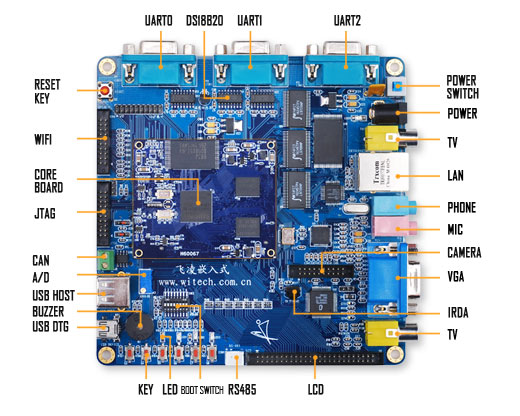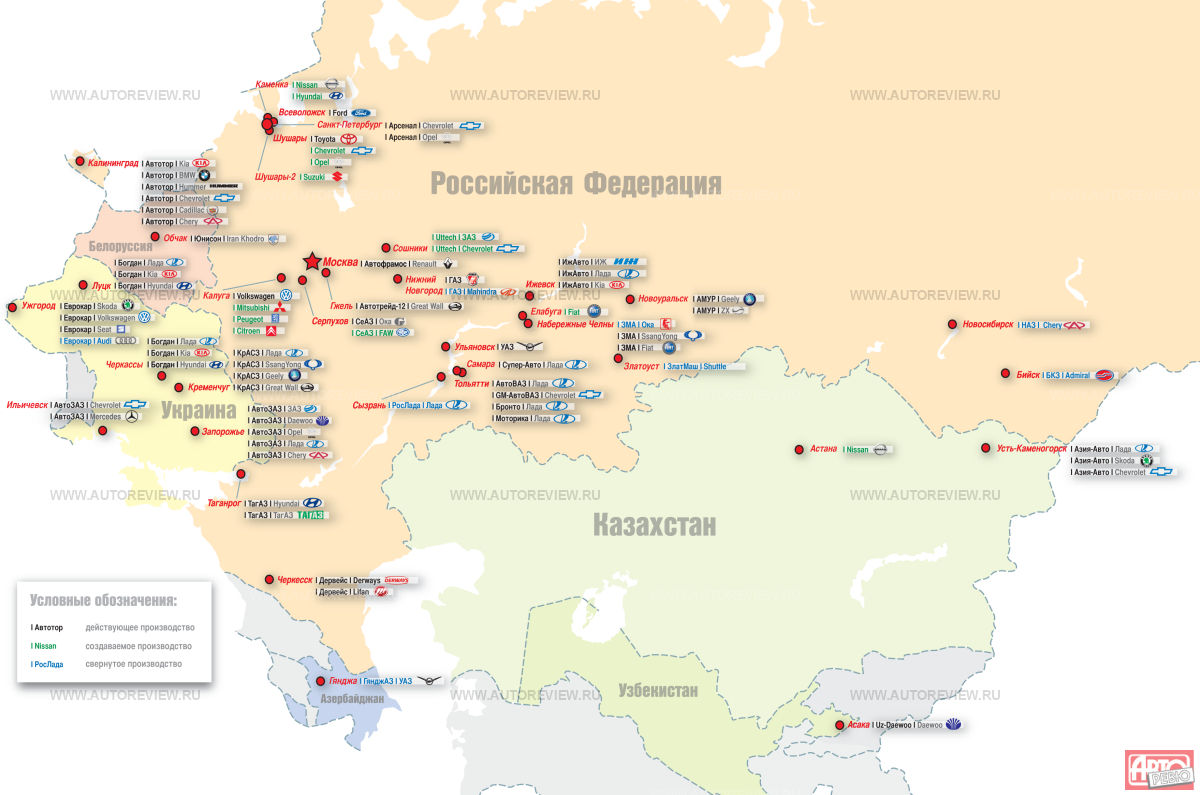GLONASS \ GPS \ Beidou monitoring
State of the art
Perhaps all the known to me trackers, which were mentioned in previous articles on Habré, use far from new technologies. This is not NTP. In fact, the market for such devices is full. Few people manage to compete with Chinese manufacturers for the price.

The main current task that stands before the designers of trackers in Russia and in the world today is to make a compact bookmark. Ie, a miniature tracker with low power consumption but with good parameters on GSM, GPS channels.
GLONASS \ GPS
Excellent communication with GPS \ GLONASS satellites is achieved by using good antennas, modules and correlators. I must say that the correlator is a custom chip based on an IP block (intellectual property block) or a good firmware for execution on an ARM-11 processor. In the public domain such programs can not be found. The most high-quality components but also expensive supplies the company uBlox. There is also a domestic military development. For example, Navis da Angstrom-T.
GSM
The main requirements for a variety of possible GSM modules is not a high price. All advanced information is unfortunately only available in Chinese. The most advanced chipset for this is the MT622X (the ones that stand on the Nokia E73).
Datasheet in Chinese by MT622X
Option Two: SIMCom900 it is based on the same class of MT623X chips with firmware from MT622X.
SIM900 Information
')
Option Three: Wait until Quectel Wireless Solutions (which is forked by SIMCom) will release an even cheaper solution.
Other alternatives include Angstrom-T, eRide, Sagem and Centurion.
Microprocessor
Each manufacturer has a desire to greatly reduce the cost of the tracker. For this it is necessary to select an inexpensive central microprocessor.
At the moment, this is usually:
LPC17XX, LPC24XX or at91sam7x256
These are microprocessors based on the ARM7 core with additional CAN bus peripherals. But these are all outdated solutions.
Let's look at other alternatives:
TMS570LS
This chip has a number of very modern interfaces and devices CAN, LIN, MibSPI, UART, HET. On its base you can build very advanced on-board computing devices.
But a favorite on the market (here I don’t provide a complete list of alternatives) will probably be Samsung chips based on ARM 9.
S3C2440
And one of the newest and most popular solutions from Samsung (ARM 11):
S3C6410
The latest chipset for developers has become popular with Chinese designers of future on-board automotive systems just recently. Just a month ago. As you can see with the chip comes a full package of various OS and programs, not to mention the development environments and boot loaders. Devices based on this chip quietly support video broadcasting, etc.
We talked about the basic building blocks of which modern black boxes are built. Let us turn to the software stuffing of modern trackers.
Modern software features trackers
Trackers of the previous generation worked on microprocessors with a strong limitation on RAM. This imposed restrictions on the architecture of the main program. Add here the need to support multiple interfaces and peripheral sensors.
Here is a sample list of devices, protocols that the previous generation tracker supports:
GSM (for each type of gsm-module its own software module)
GPS (from various manufacturers including SMS, Voice Data, GPRS)
Flash memory
Timer
CAN
i2c
keyboard
barcode reader
fuel sensors (ultrasonic and capacitive)
permutation module parts of the transmitted data
update module via voice data
temperature sensors
pressure sensors
video camera
Zigbee
alarm module
geofences
speed control
time control
control of the level of an arbitrary analog signal
module remote tracker commands
terminal interface support
Of course, this is a complex program, but it was implemented only on 64K of RAM. As a result, the program consisted of about 450 pieces of code that were associated with individual parts of the overall functionality of the device black box.
In addition to the device firmware, a tracker setup program and a maintenance server or a private server with support for electronic cards of various formats, or interfaces to map services from Google or Yandex are required.
Major Russian manufacturers of trackers
Tula:
www.radsel.ru
Sverdlovsk:
www.kb-navigator.ru
Minsk:
www.rainbow.by
Izhevsk:
www.irz.ru
Permian:
www.morion.ru
Chelyabinsk:
www.planar.chel.ru
www.trans-pribor.ru
www.mtsk.ru
www.black-box.ru
www.tk-chel.ru
Tolyati:
www.agisltd.ru
Peter:
www.piligrim-gps.ru
www.promasu.ru
www.omega-smb.ru
www.scout-gps.ru
Moscow:
www.m2m-t.ru
www.barl.ru
www.t-helper.ru
www.autotracker.ru
www.glorient.ru
www.gelix.com
www.videofonmv.ru
www.contisatellite.ru
www.ask-gps.ru
www.stm.vinco-t.ru
www.telemak.ru
www.omnicomm.ru
New software features trackers
Separately, I will focus on CAN 2.0 and LIN interfaces. They serve to obtain data from the working engine of the car. In modern trackers there is a possibility of very flexible setting of the volume and time intervals of receiving data and sending them via GSM module (Voice data, GPRS, SMS) or accumulating this data in flash memory and then resetting through one of the many available services.
The next generation of trackers will be able to transfer some commands to the car engine. But at the moment, using these interfaces to collect information requires separate adapters from third-party manufacturers (for example, from Squarell or ACElab). These adapters provide optical and wireless isolation from power surges in the on-board power system as well as independence from the connectors used in cars of various brands.
All received digital readings (including the coordinates of the object of observation) require pre-digital filtering and mathematical processing. It is in these parts of the program that the main competitive advantages of one or another tracker are contained. For example, drawing a track of an object without emissions and incorrect straightening requires an analysis of geographical maps of the area. But before this, the data on the coordinates are also subjected to digital filtering for interpolation-smoothing the sections of the path and compressing the information transmitted to the server.
These algorithms can be implemented both on the server and on the black box side of the new generation. But IMHO the best way is a reasonable separation of data filtering into two parts. The first, which is performed on the tracker and can be remotely configured, and the second, which can work on the server and even be modified by integrators and end users.
Applications for new trackers
Let us list in one place the horizons for the use of such devices.
Object control:
international associationspassengers
cars
car company
auto delivery service
utilities
building sites
railroad
containers
river and sea transport
the police
collection
expeditions
individual remote travelers
New features of the latest generation of tracker chips
Let us repeat with a single list possible functional prospects for the development of a black box.
Hardware features:
Channels - satellites, COSPAS-SARSAT, GSM, CDMA, Simplex, LTE, VHF, UHF, wifi and bluetooth, ZigBee, Netsukuku, Skipe, Sip, APRSPositioning signals: GLONASS, GPS, Laurent
support all TCP / IP, UDP, FTP, SMTP, SNMP, POP3 transmission protocols
packet data
security system, door sensors
Dvd player
Tv tuner
radio
car computer
local mobile internet router
geo-maps, satellite constellation almanac (AGPS)
SD / SDHC memory cards
IR receiver
CANbus, K-line, JLINK, LINbus
barcode scanner, magnetic and smart cards, RFID, QR-code
numeric keypad with input indicator
biometric readers
and other possible bases of enhanced reality
Software features:
Demanded during the hijacking:
alarm and emergency messages and the inclusion of audio and video transmissionscar opening control
definition of attempted theft
change of transmission frequency to transition to beetle mode while fixing an attempt of detection (IDS)
For control room:
Traffic control (building traffic jams)Fuel control
sensor data acquisition
sending security signal
log saving
remote access to the car through the phone to receive alarms and remote blocking, unlocking
video recorder and audio recorder from inside and outside the car (DVR) with the function of tracking and switching cameras of the review
route planning
navigation software
automatic construction of new geo-routes, roads
forecast whether transport can be reached on time
several levels of exceeding the maximum speed
fixation of departure for a geo-zone of arbitrary shape
flexible setting of transmission intervals with reference to any vector mask
internal and external state vector (parking, motion, rotation, latitude, speed, longitude, altitude, direction, date-time, sensor readings vector, maximum and minimum distances, the number of minimum increments of the degree of rotation, thermal expansion, horizon)
Detection of the distance to neighboring cars by LED headlights and automatic high beam switching off
Required driver service functions:
navigation software, personal navigatorroute planning
communication channel with the car manufacturer
every minute forecast whether transport can get on time
traffic sign recognition and violation warning
information about gas stations, cafes, tire service, car services and car washes
social network with traffic police information and incidents and info bonuses
fuel economy recommendations (driving style)
automatic alarm driver attention sensor driver heart
automatic identification system (AIS information on surrounding mobile objects and operational mailings)
road and gasoline payment procedures
automatic transmission of the operation of airbags in the center of the Ministry of Emergency Situations and the alarm button SOS (Mayday)
electronic filing of incident reports
package manager for software updates
weather forecast for 3 hour periods
taxi driver service
identification terminals, cargo registration and payment for transportation services
switching simok, roaming and transmission channels
pavement monitoring and sending messages to the road service
road trains
combination of radar and camera to avoid hitting a person
communication with "smart" road communications, including signs, traffic lights and parking spaces
breathalyzer
entry of information from invoices and other documents via barcode, keyboard, RFID
Onboard computer
As a result, a tracker built on ARM 11 can theoretically process streaming video, hold a communication channel, give recommendations on navigation and movement, and display additional information such as “enhanced reality”.
It can also perform complex corrective calculations to improve the quality of received signals from satellites and better processing of the collected data.
For example, based on the analysis of the dynamics of changes in speed and fuel consumption, it is possible to give a recommendation for more economical traffic. This saves an average of about 10% of the fuel.
Transferring heading and speed data to neighboring cars will help reduce the number of collisions and dangerous situations. That is, in fact you'll see cars that are moving around the corner. Plus, by registering in the social network of drivers, get this and information about traffic police and traffic difficulties.
All procedures for payment, monitoring, controlling, recording incidents, transferring insurance amounts as needed can be made operational and transparent. It will not be necessary every time the road police go to the scene of the accident.
Unfortunately, there are no standard consumers and therefore trackers are developing in the direction of flexible adjustment of their functionality. Due to stiff competition, I am not inclined to go into the details of the technical description. But I will gladly try to answer all your questions.
Map of automobile plants

For the implementation of such a project need cheap chips. This is ensured by its production factory. A large team of programmers, managers and electronics engineers. Up to 700 people. This requires serious investments not only in workplaces and the construction of capital housing and infrastructure development, as well as fixed costs for campaigning and mass cultural work, food and for maintaining sanitary and technical standards. We also need well-equipped laboratories for product testing. Workshops and production lines and packaging. Terminal-warehouse for the storage and shipment of packaged products. The room for vocational education courses and teachers (it is possible to combine with the main work in the company). Offices for the sale and information and technical customer support (including drivers in real time). And also direct communication with customers - mobile service providers, manufacturers of cars, tractors, combines (many factories in Russia) and licensing authorities in the government and banking sector . It would be great to combine, using common protocols for exchanging with servers and the interface for modular integration of binary IP blocks, a multitude of disparate tereker developers. For example, you can select one core of a multi-core ARM processor exclusively for executing closed binary modules associated with the OS standard API.
Source: https://habr.com/ru/post/101017/
All Articles